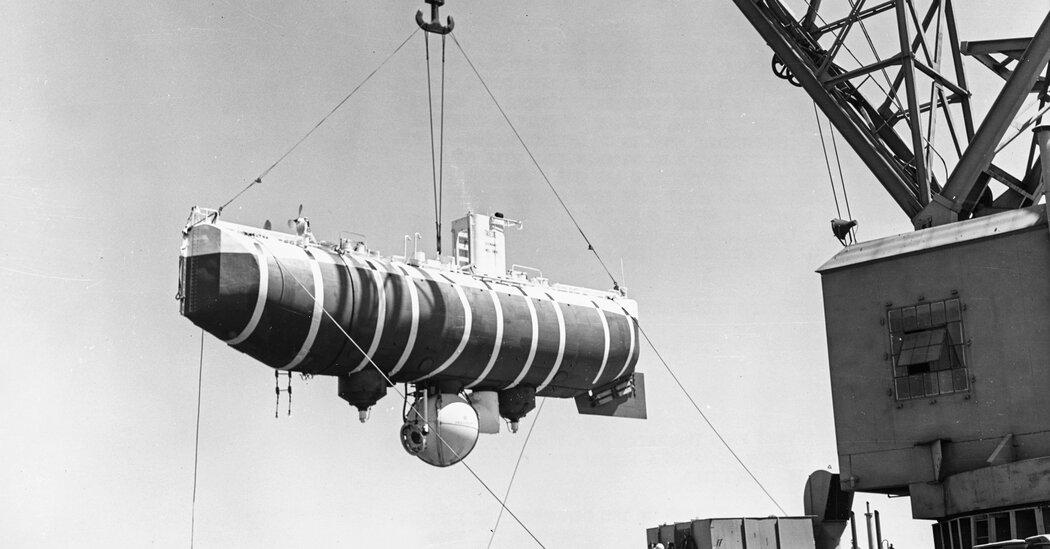Individuals have documented visually about 1470 sq. miles or solely 0.001 % of the deep seabed, According to a new studyS This can be a little bigger than the scale of Rod Island.
The report printed on Wednesday at Science Advances journal arrives as a debate on Nations whether to pursue the industrial extraction of the seabed For vital minerals.
Some scientists say that so little is thought concerning the underwater world that extra deep seabed analysis is required to maneuver responsibly with mining actions.
“Extra data is all the time helpful, so we will make extra knowledgeable and higher choices,” says Katie Croff Bell, a marine biologist who runs the research and founding father of Ocean Discovery League, a non -profit group that promotes the seabed research.
Studying extra concerning the deep sea is crucial to understanding how local weather change and human actions have an effect on the oceans, she stated. However the research additionally emphasizes the fundamental pleasure of the research, which drives many marine scientists.
“You possibly can simply think about what’s within the different 99,999 %,” stated Dr. Bel.
The visible documentation of the deep sea, which started with the three-sister of the Deep-Sea Smodersibles in 1958 after which Alvin in 1960, allowed biologists to find new organisms and observe how they work together with one another and their setting, giving view of the ocean ecosystems.
Depriving deep -sea organisms to the floor is a problem. Tailored for top stress, few animals, if any, they expertise the journey, so images and movies are essential.
“There are some habitats you can’t strive from a ship,” says Craig McClain, a marine biologist on the College of Louisiana who didn’t take part within the research. “You must go there to ROV and do it,” he stated, referring to distant automobiles.
Acquiring visualizations on the seabed additionally helps geologists. Previous to the appearance of remotely managed submarines and crews with floods, the researchers had a extra upgraded method: drop a big bucket of a ship, drag it, pull it and see what’s inside.
“They’d simply have a mixture of rocks and attempt to organize it with out context,” says Emily Chin, a geologist on the Scripps Oceanography Establishment, which didn’t take part within the new research. “It is like folks studying meteorites attempting to know a course of on one other planet.”
Seeing rock rocks on the seabed in images and movies, scientists have discovered how primary earth processes work. It additionally helps firms consider potential services for mining and oil and gasoline actions.
However attending to the seabed is pricey, each in funds and in time. A survey of 1 sq. kilometer deep can price from $ 2 million to $ 20 million, in accordance with the Bel. Dives can take years to organize for hours to go mistaken. And after diving, he progresses slowly. A rover hooked up to a ship has a restricted radius of a research shifting when crawling and shifting the ship is annoying.
With so many limitations, D -R Bel needed to understand how a lot sea flooring we noticed and the way a lot it stays to be explored.
Dr. Bell and her associates collected greater than 43,000 data of deep-sea divers and evaluated the collected images and movies, evaluating what number of seafood zone they documented.
Collectively, they estimated that between 2130 and three 823 sq. kilometers from the deep seabed had been depicted. This works to about 0.001 % of your complete deep seabed.
“I knew it will be slightly, however I am undecided if I anticipated it to be so small,” stated Dr. Bel. “We have been doing this for nearly 70 years.”
The research excludes its personal dives the place information shouldn’t be publicly accessible, reminiscent of navy operations or oil and gasoline survey. Even when they enhance the documented space with an order, D -B Bel stated, “I do not assume it is sufficient to maneuver the needle.”
A lot of what deeply marine biologists know concerning the seafloor relies on this small fraction. The state of affairs is much like the extrapolation of knowledge from an space smaller than Houston to all earth surfaces on Earth, the authors say.
The research additionally discovered that top -income international locations lead 99.7 % of all deep dives, with the US, Japan and New Zealand topping the charts. Most dives had been inside 200 nautical miles of those three international locations. Which means that dives are guided by a small group of nations, probably hooked on what are being examined and the place, the authors say.
“There are lots of folks world wide who’ve a deep sea experience,” stated Dr. Bel. “They only do not have the instruments to allow them to do the kind of analysis and analysis they wish to do.”
Dives are usually in the identical areas because the Mariana trench or Monterey Canyon, or to focus on the identical sorts of traits which might be of curiosity as hydrothermal openings, the research discovered. And for the reason that Eighties, most deep dives have been in quickest, extra coastal waters. This leaves many areas within the deep sea unexplored.
“The research is an efficient appreciation of the place we’re in and, actually, the place we should always go to the deep sea,” stated Dr. McClain.

